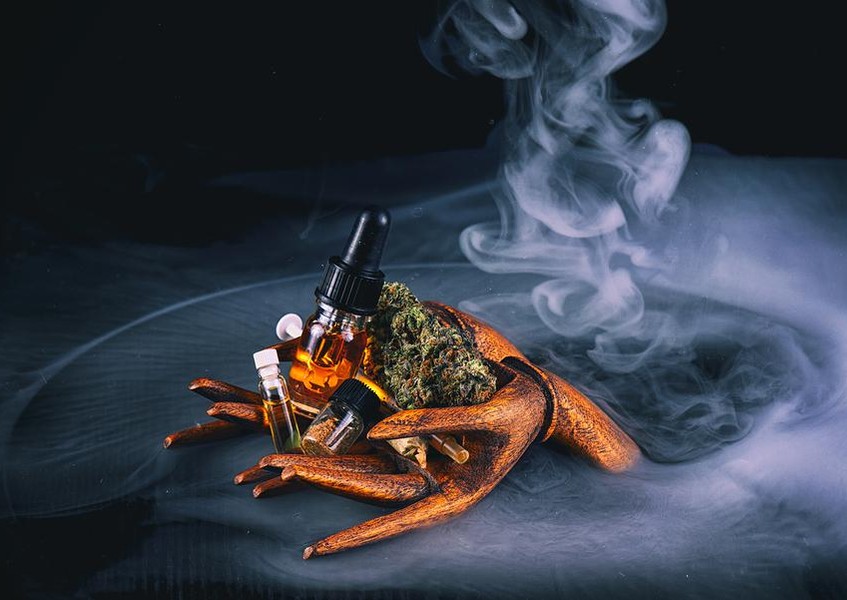First-time cannabis users and social users do not reach for potency. Most of them are happy with a light to moderate high. Moreover, they are inclined to like the convenience of smoking rather than the expense and process of dapping. Early users do not focus on the respective differences between smoking and dabbing highs.
Veteran users and those wishing to increase their experience are. Regular cannabis use will have you wanting for higher potency. Regular use increases your tolerance, so you may want a way to switch strains or assess your intake process.
Getting value from weed —
Weed comes in scores of strains. They vary in flavor, aroma, medical benefits, and potency. As legalization has rolled out, dispensaries are often limited to offers from local growers and suppliers. As legalization spreads, that supply chain will tighten, and more customers will have access to a larger variety.
In the meantime, dispensaries sell buds grown indoors and outdoors at prices heavily influenced by state taxes. Customers invest in whole buds they process into flakes for smoking or in prepared baggies for rolling into joints for smoking. And the potential revenues and markets are driving breeders to develop new and more potent hybrids priced higher by supply and demand.
Smoking weed is convenient because the equipment needs are minimal. People smoke rolled into joint papers, wrapped in blunts, stuffed in pipe bowls, or added to a water bong. Because smoking cannabis has been the norm, it’s become central to the culture, and for most users — novice and veteran, it is the option of choice. The smoke, the secondary smoke, the lighting, and the ashy byproduct have a ritual role.
Getting value from wax —
Wax is a collective label for concentrates like shatter, butter, and rosin, each of which has varied forms. It does not have the bold or pungent smell of weed until broken apart or used. The advantage is that wax has all the properties of a cannabis strain packed and intensified.
The “problem” with wax is its inconvenience. It requires more equipment and takes more steps to enjoy. Dabbing requires a rig with a heated titanium or quartz “nail” on which you place (or “dab”) the wax. You need a butane torch to heat the nail to melt the wax and create smoke you inhale. The process takes some training and a learning curve to prevent damaging the rig or starting a fire.
But how does the high differ?
Cannabis combusted in and inhaled from a joint delivers the strain’s properties to your system through the mouth, lungs, and blood system. Some strains impact sooner than others. But traveling with that smoke are other carbon elements, some of which can damage the respiratory system.
Those elements are not present or in the way of the inhale from heated wax. So, it tends to trigger effects quicker. Wax is, after all, a concentrate. If the point is to get very high as fast as possible, wax is the choice.
Some cannabis strains are now testing at 30% THC. But concentrates are posting at 60 to 80% THC per gram, and crystalline forms have been reported at 99% THC. One advantage of legalization is the increasing use of third-party testing reported on websites and labeling for sophisticated consumers who want to avoid residues from butane, alcohol, and other processing methods.
Given such potency and direct path to the brain, it’s also difficult to determine appropriate dosing, but any novice in dabbing should start very small before titrating the dose upwards. You should watch your psychoactive response, medical benefit, and negative aftereffects. And, you should not start a dabbing session without others who know what they are doing.
You must dab carefully and dose prudently to avoid the paranoia or even unconsciousness that could follow careless use. The high potency in wax can be simply overwhelming if you have not built up a tolerance to the “pot of steroids.” While the wax is packed with cannabinoids, flavonoids, and terpenes that give you a full spectrum experience, but the concentration of THC must be anticipated and managed.
What makes sense?
As the popularity, social acceptance, and legalization of recreational and/or medical insurance expand, so does the demand for varied experiences. New and long-time users want more choices and higher experiences.
The consumers are building physical and psychological tolerance for product. Many of them are perfectly happy with the occasional smoke from a moderate to high potency strain. More frequent smokers have been looking to heighten their psychoactive experience or medical b benefits, and wax offers a solution. And, chronic users are always interested in taking the next step because their tolerance has also increased.
Wax provides a much higher potency. Free of carcinogens, dabbing is a much less risky form of inhaling and processing. And, dabbing smoke contains a fuller spectrum of benefits.
However, dabbing presents a new set of risks from butane, toxicity, fire, and explosion. Hallucinations and paranoia are common experiences when THC potency is extremely high. And, while there are no reported deaths connected with using wax, it can leave users with poor judgment, lethargy, and sedation around glass, heat, and fire.
It makes sense, then, to not rush into cannabis wax use. If you use it to up the ante on your experience, you may need a cannabis break to readjust your tolerance. When you shop for concentrates in any form, you must know its contents and tested potency. You don’t start dabbing without training and observation. And, moderation should rule.




